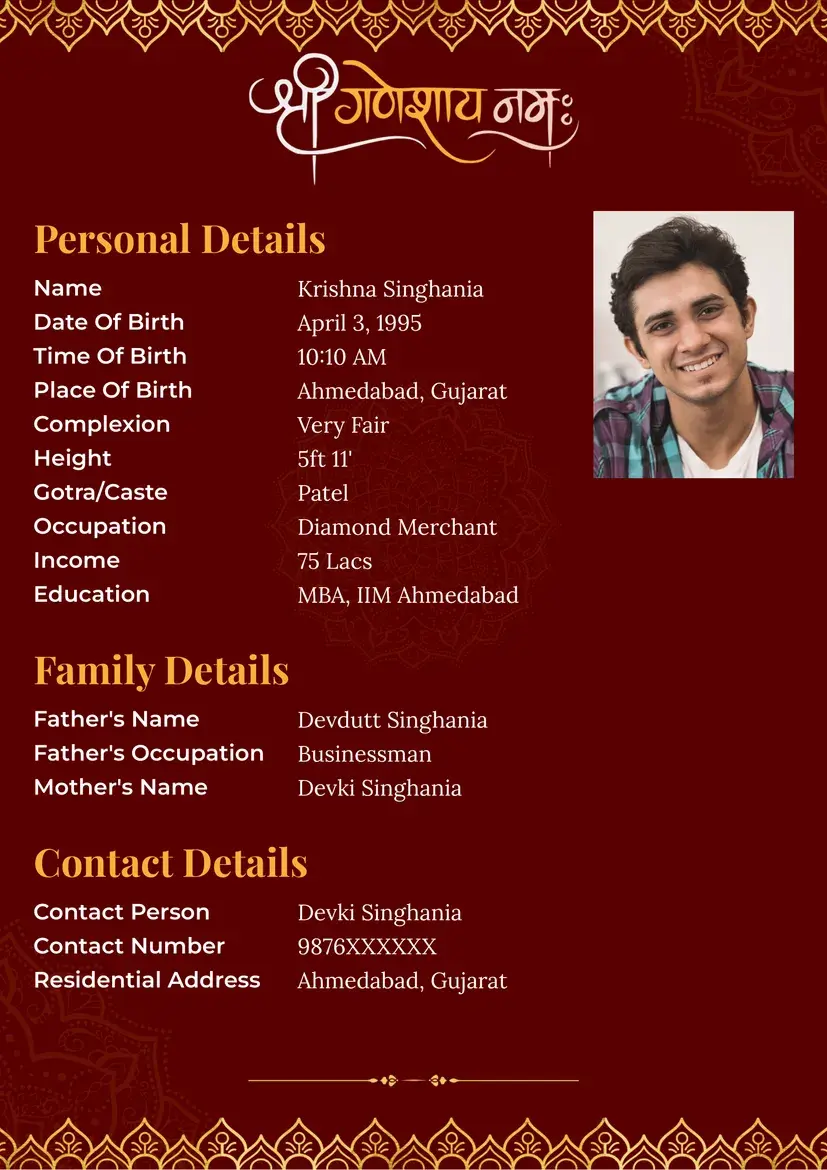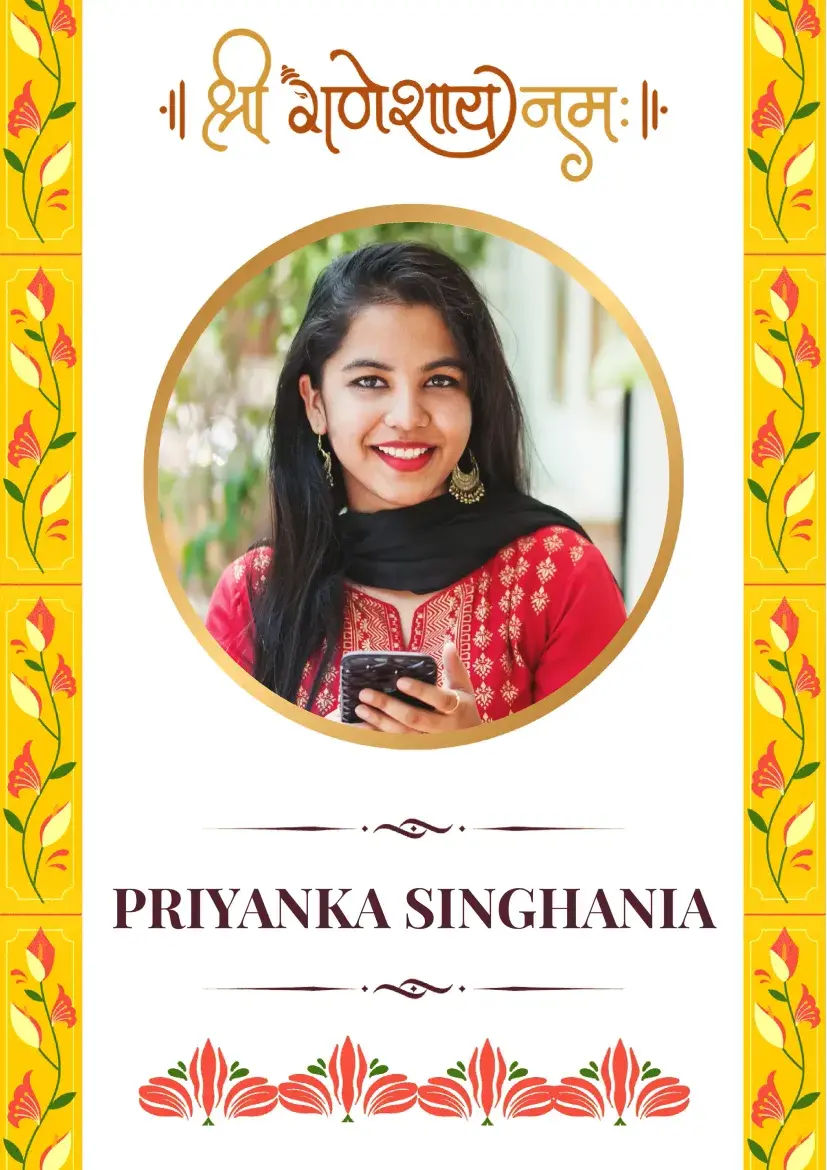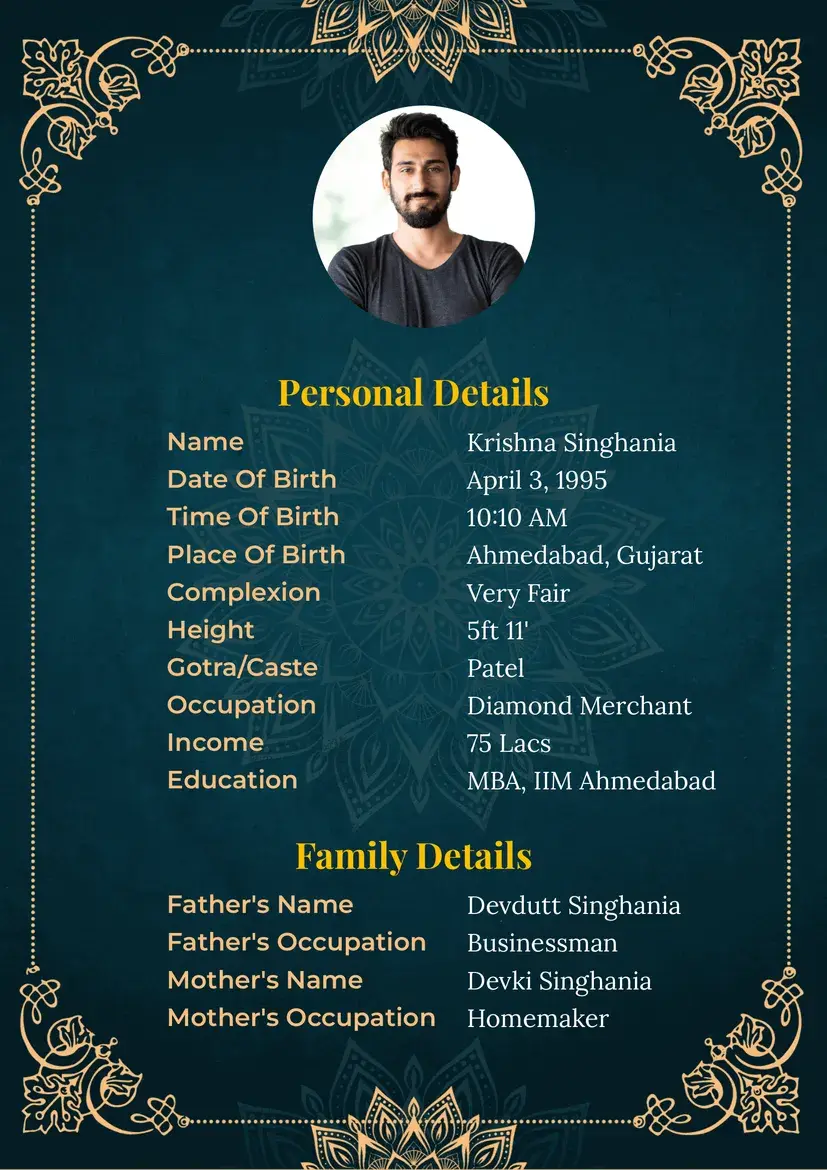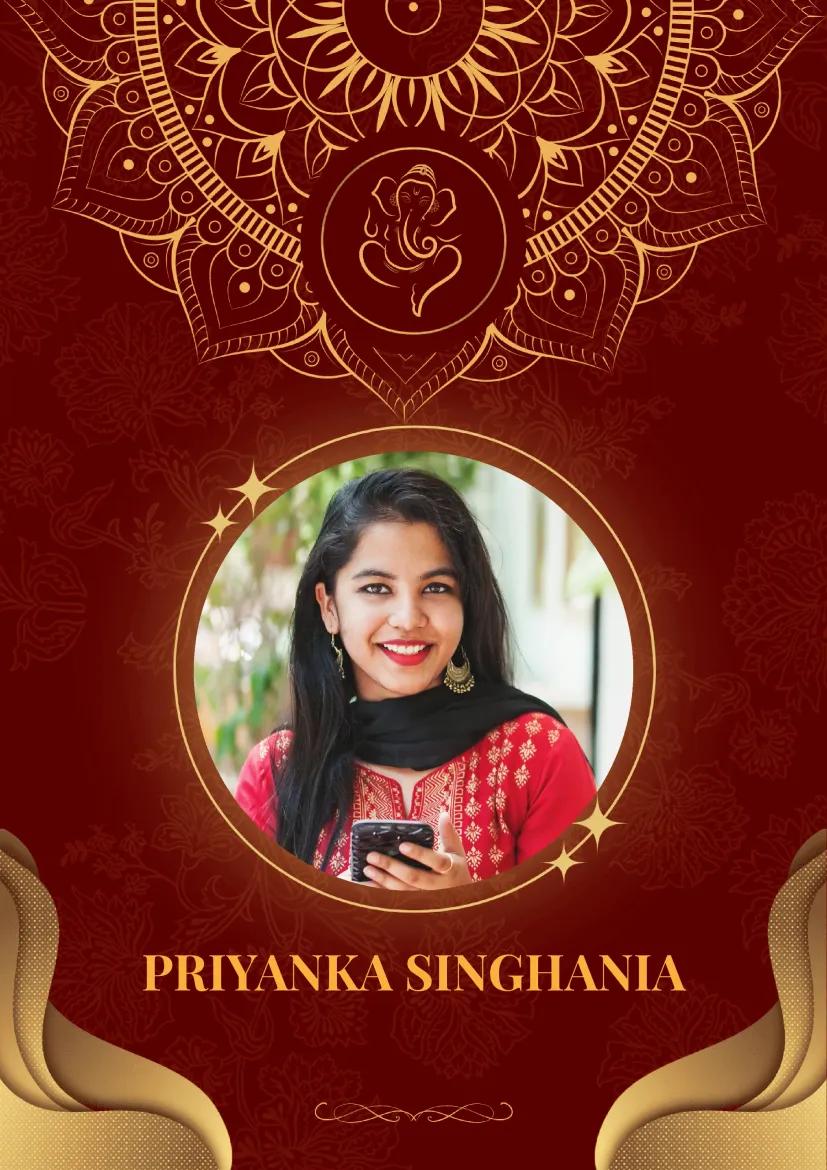
Kundli Matching - Horoscope Matching for Marriage in 2026
The importance of Horoscope Matching for Marriage in 2026 is as high as ever. It is a tradition that has been practiced for centuries in India and has deep roots in ancient Vedic astrology. The practice finds its origins in the belief that the cosmic alignment at the time of a person's birth—reflected in their kundli (birth chart)—can significantly influence their destiny, personality, and relationships.
What is the History of Kundli Matching in Hindu Culture?
The tradition of kundli matching for marriage compatibility in Hindu culture is deeply rooted in ancient Vedic astrology, which is an important part of Hindu traditions. The practice finds its origins in the belief that the cosmic alignment at the time of a person's birth—reflected in their kundli (birth chart)—can significantly influence their destiny, personality, and relationships.
Does Hindu Mythology has reference to Kundli Matching?
There are stories in Hindu mythology, like the union of Lord Shiva and Goddess Parvati, where astrology played a significant role in their union. Goddess Parvati is said to have undergone penances and followed strict rituals to please Lord Shiva. When the astrological moment was deemed favorable, they were united in a harmonious marriage. This tale from our Puranas emphasizes the divine timing and astrological alignment that is important for a successful marriage.
Why is Kundli Matching Important in Hindu Tradition?
- Harmonizing Planetary Energies: The primary purpose of kundli matching is to ensure that the planetary energies of both individuals are compatible for a harmonious and prosperous married life. This is done through the Ashtakoota matching system, which compares the bride and groom's kundlis on eight different aspects (Gunas) of compatibility.
- Avoiding Doshas (Flaws): Another key aspect of kundli matching is to identify and rectify astrological doshas or flaws, such as Manglik dosha (Kuja Dosha), which can create hardships in marriage. Our religious texts often attributes these doshas to past-life karma, and through rituals, these doshas can be neutralized to avoid any adverse effects on the marital relationship.
- Ensuring Longevity and Prosperity: Hindu scriptures, such as the Garuda Purana and Brihat Parashara Hora Shastra, also emphasize the importance of choosing partners with compatible horoscopes to ensure the longevity of the marriage, the prosperity of the couple, and even the health of future offspring.
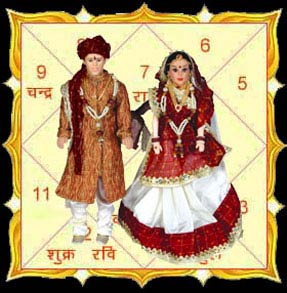
What are some of the Popular Methods of Horoscope Matching?
-
Kundali Matching by Date of Birth : In traditional Hindu culture, when a family is considering a prospective match for marriage, they often consult their family pandit (priest or astrologer) to perform kundli matching. The family shares the birth details of the bride and groom—such as the exact date, time, and place of birth—with the pandit, who then prepares their horoscopes (kundlis). Based on Ashtakoota (Guna) analysis, the pandit advises whether the match is auspicious or suggests remedies if any astrological doshas (flaws) are found.
-
Kundali Matching by Name : When birth details of the bride/groom are not available, then their names are used to determine matrimonial compatibility. In Hindu culture, names are given based on an individual's natal chart, making them highly significant and reflective of one's horoscope. In name-based kundali matching, the names of the bride and groom are used to determine their birth nakshatra (Janam Nakshatra and Janam Rashi) which is analyzed to determine their compatibility and alignment with each other.
-
Online Matrimony : Online kundli matching also uses the trusted and well-known Ashtakoota method of Guna Milan to calculate how many of the 36 gunas align between a couple. Our fast, accurate and user-friendly online kundli matchmaking tool allows you to accurately compare the horoscopes of the prospective couple in just a few minutes.
What is Gun Milan?
In the Ashtakoota matching system, the Gunas are points or aspects used to measure the compatibility between the horoscopes (kundlis) of a prospective bride and groom. The term "Ashtakoota" translates to "eight aspects," as it evaluates eight distinct areas of compatibility. These eight factors help assess whether the couple is compatible on emotional, physical, mental, and spiritual levels. The maximum score is 36 points, and at least 18 points are required for a match to be considered acceptable.
What are the 8 Gunas (Kootas) and what does each Guna mean?
-
Varna (1 point):
- Meaning: Varna refers to the spiritual compatibility and social standing of the individuals. It divides people into four categories: Brahmin (highest), Kshatriya, Vaishya, and Shudra (lowest).
- Significance: This koota determines the spiritual and egotistic compatibility. It assesses whether the couple shares similar social and spiritual tendencies.
-
Vashya (2 points):
- Meaning: Vashya indicates mutual control and influence over each other. It classifies people into five categories: Manav (human), Vanchar (wild animals), Chatuspad (small animals), Jalchar (aquatic), and Keet (insects).
- Significance: This guna checks the level of harmony and mutual attraction between the couple, ensuring a balance in their relationship dynamics.
-
Tara (3 points):
- Meaning: Tara refers to the birth stars or nakshatras of the couple. It measures the compatibility of their nakshatras with each other.
- Significance: Tara koota assesses health, well-being, and longevity in the relationship. A good Tara match signifies harmony in the couple’s destiny and life journey.
-
Yoni (4 points):
- Meaning: Yoni measures physical compatibility and sexual attraction. It assigns different animals to different nakshatras, such as horses, snakes, cats, etc., and compares the yonis of the couple.
- Significance: This guna evaluates the couple's physical and sexual compatibility, ensuring that their intimate relationship is harmonious.
-
Graha Maitri (5 points):
- Meaning: Graha Maitri measures mental compatibility based on the ruling planets of the couple.
- Significance: It checks for intellectual and psychological harmony, which is essential for emotional bonding and mutual understanding between the partners.
-
Gana (6 points):
- Meaning: Gana refers to the temperament and behavior of individuals. There are three ganas: Deva (godly), Manushya (human), and Rakshasa (demonic).
- Significance: This guna evaluates the behavioral compatibility and emotional temperament. It checks whether the couple's personalities complement each other.
-
Bhakoot (7 points):
- Meaning: Bhakoot is concerned with the relative positions of the moon in the horoscopes of the bride and groom. It assesses how their moon signs (Rashis) relate to each other.
- Significance: This is one of the most important gunas, as it predicts the couple’s financial stability, well-being, family harmony, and overall prosperity. A favorable Bhakoot match indicates good fortune and marital harmony.
-
Nadi (8 points):
- Meaning: Nadi evaluates the genetic compatibility between the couple. There are three types of Nadi: Adi (Vata), Madhya (Pitta), and Antya (Kapha).
- Significance: This guna is considered crucial for health and progeny. It assesses the couple's ability to have healthy children and avoid genetic incompatibilities. A Nadi dosha (mismatch) can have serious implications, so remedies are often sought if there is a mismatch.
How many Gunas should match for a Successful Marriage?
The total score of these eight gunas determines how compatible the couple is:
- Less than 18 points: The match is considered inauspicious and may lead to challenges in marriage.
- 18 to 24 points: The match is acceptable but may require some caution.
- 25 to 32 points: The couple is considered highly compatible.
- 33 to 36 points: The match is excellent, indicating a harmonious and balanced relationship in all aspects of life.
Each guna plays a distinct role in understanding various aspects of marital life, including emotional, physical, mental, and spiritual compatibility. Together, they provide a holistic picture of how well-suited the couple is for a successful and long-lasting marriage.
Should you marry if Gunas/Horoscopes don't match?
You should consult a Good astrologer if Guna Match Score is less than 18 points or there is substantial difference in the horoscopes of the bride and groom due to Manglik dosha (Kuja Dosha) or any other astrological dosha. You can consult Guru Rajneesh Rishi Ji - Famous Vedic Astrologer in 133 countries who has 33+ years of experience. To consult him, call us - 6364650078 or visit his website - www.shanipeeth.org.
Marriage Biodata Template Gallery
